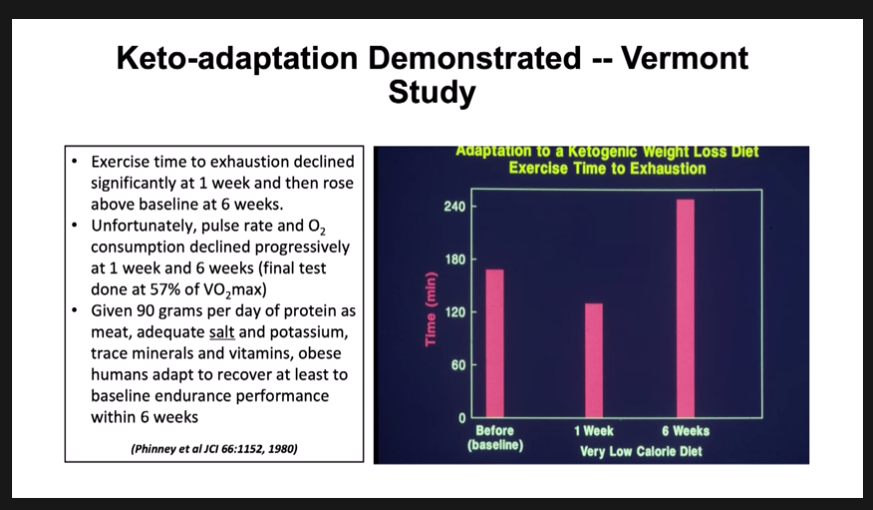Dr. Robert Atkins scandalized the medical, public health and dietary community in 1972 when he published Dr. Atkins’ Diet Revolution, in which he advocated a significantly carbohydrate-limited diet that promoted consumption of most calories from protein and fat.
Dr. Stephen Phinney is one of the courageous pioneers who was open to studying the effects of a low-carb, high-fat diet in the 1970s instead of just dismissing it.
As he relates the story in the video below, several of his patients who had gone on the Atkins diet reported feeling fine and with plenty of energy, which was contrary to what Dr. Phinney had personally experienced in “bonking” on mountainous bicycle rides from lack of carbohydrates.
I’ve cued the video to where he begins telling this story, and how he was able to demonstrate that the previous studies comparing high and low-carbohydrate diets that led to the practice of “carb loading” in athletes were too short in duration, and consequently had missed the phenomenon of ketogenic adaptation.
My summary of his main points:
- If you consistently have abundant carbohydrates in your system, your body will use those for fuel and will not access the energy you’re carrying in your fat stores.
- It takes at least several weeks of a low-carb diet (50g/day maximum) to convert your body to fat-burning. For elite athletes it can take six months to a year to fully adapt and reach previous levels of performance.
- Once you have become keto-adapted, instead of being limited to the 2,000 or so calories of carbohydrate energy your muscles and liver can store, you have access to 20-100 times as much energy stored in your body fat.
- For sprinters and those whose contests are over quickly, keto-adaptation is likely not a high-performance strategy. Carbohydrates can supply what they need more quickly.
- The biggest athletic performance benefits accrue to endurance athletes. Several ultramarathoners have set performance records when keto-adapted, because they don’t need to consume sugar-laden gels for energy as their competitors do. Instead of having blood supply diverted to digestion, they continue getting energy from fat.
- Adapting to a ketogenic diet leads to better performance and higher sustained energy levels, even for people who aren’t interested in running marathons or participating in even more extreme athletic contests.
This really hit home for Lisa and me when we were helping our son and daughter-in-law move into their third-floor apartment several months ago, in a building with no elevator.
We made scores of trips up and down the stairs carrying furniture and boxes of various sizes, and were struck by how good we felt.
We were able to bound up and down the stairs without getting tired and we worked right through lunch without hunger. We surprised ourselves with our stamina.
Certainly it made a difference that we each were carrying 30 pounds less fat than we had been a year earlier, but as you’ll see from the results of the first experiment Dr. Phinney describes in the video below, the bigger issue was that we were able to access the energy in our remaining body fat to move both ourselves and the furniture.

You may have heard of the so-called “Keto Flu” or “Atkins Flu” that often accompanies a change to a low-carb diet. It’s a real but short-lived phenomenon, and you can mitigate the effects on daily activities to some extent through adequate salt intake.
I hope you’ll take 28 minutes to watch this last part of Dr. Phinney’s presentation, to learn how adapting to a ketogenic, low-carb healthy high fat diet can help you lose weight while gaining significant energy for everyday activities.
If you’re interested in the background on how carb-loading became standard practice in sports training, hit the play button below and then scroll back to watch the whole video from the beginning.
If you think your friends might find this post helpful, I hope you’ll share by email or on your social networks using the buttons below.
To get these updates on a regular basis you can subscribe by email, or follow me on Facebook, Twitter and LinkedIn, where I’ll also be posting links.
Check out My Health Journey for the full story of our health improvements, and my #BodyBabySteps for an approach to how I would do it if I were starting today, based on what I’ve learned.